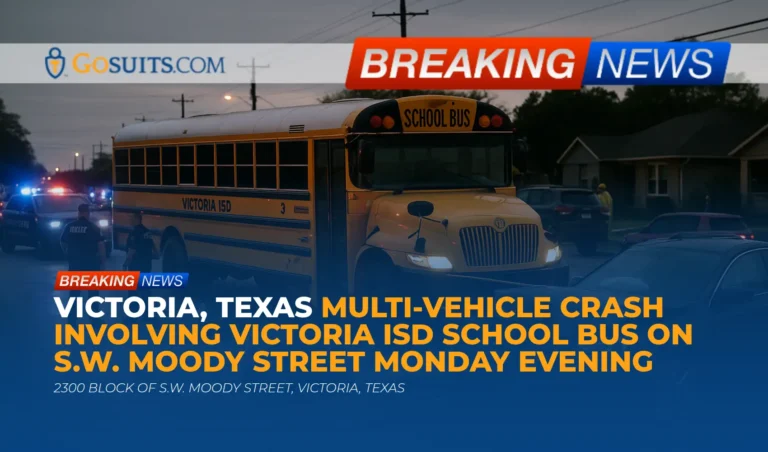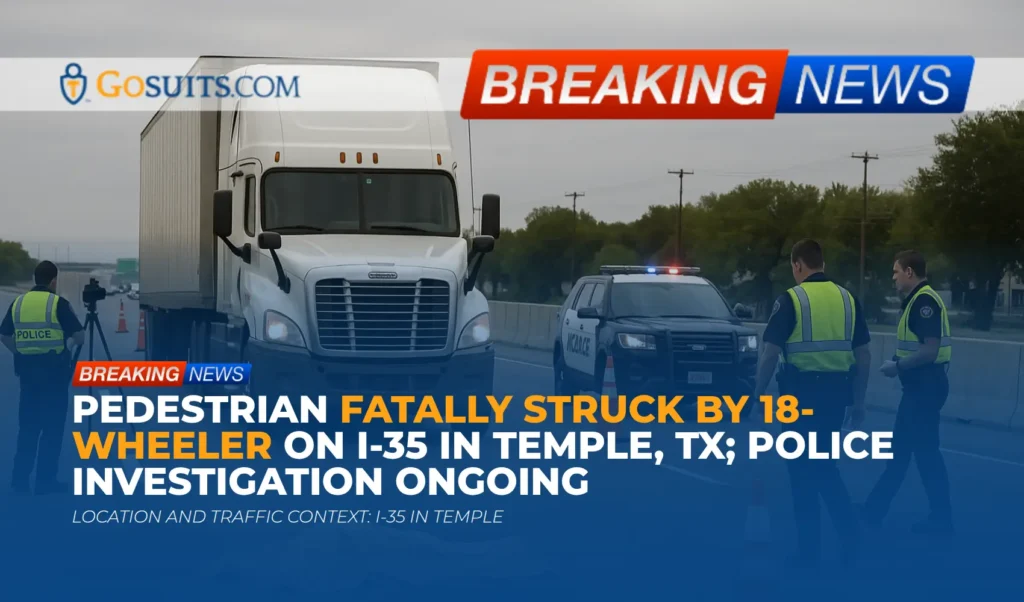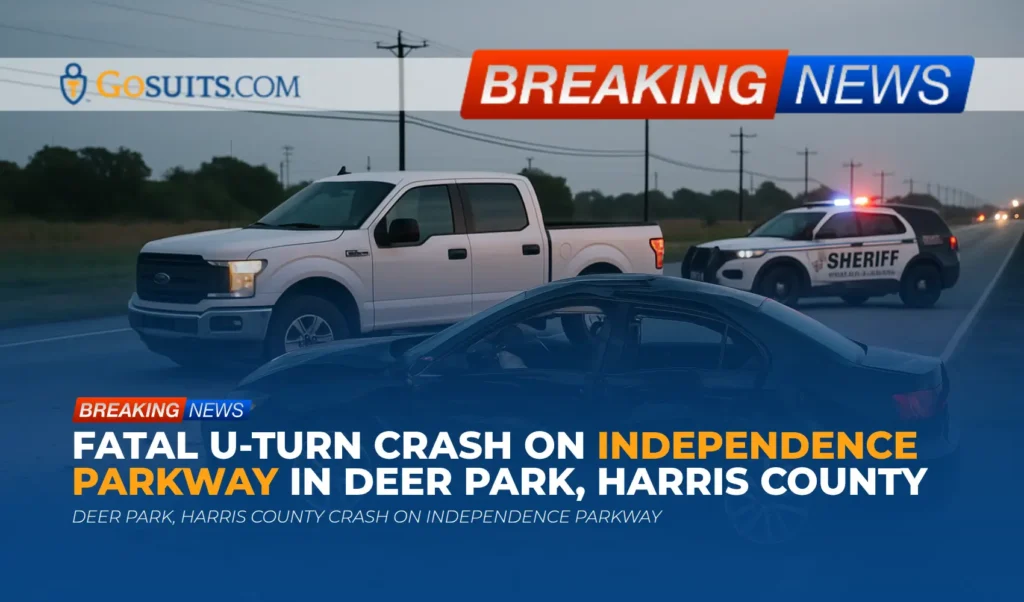- What is known about the crash
- Where and when it happened, and likely agencies involved
- Records and information families often seek
- How to obtain key records in Texas
- Legal context in Texas for school-bus-involved crashes
- Insurance and claims considerations
- School bus safety background and traffic rules
- What to document after a crash
- Important timelines and deadlines
- Commentary from Gosuits Victoria, Texas Personal Injury Attorney
- Why acting now matters
- Government and academic sources cited
What is known about the crash
Local reporting indicates a multi-vehicle crash involving a school bus occurred on Monday evening in the 2300 block of S.W. Moody Street in Victoria, Texas. Initial descriptions varied, with some reports describing it as a three-vehicle collision and others as a four-vehicle collision involving a Victoria ISD bus. As is common in the immediate aftermath of a roadway incident, details may be refined by officials as they complete their investigation and release public records. At the time of the reporting, the names of those involved were not publicly released within the story shared, and the extent of injuries was not stated.
When a school bus is involved in a crash, multiple agencies may contribute to the response and subsequent investigation, including local law enforcement, emergency medical services, and the school district’s transportation department. Clarifying details such as the direction of travel, traffic controls, road conditions, and the involvement of any commercial or private vehicles typically requires the official crash report and, if applicable, supplemental records like scene diagrams and witness statements.
Where and when it happened, and likely agencies involved
The reported location is the 2300 block of S.W. Moody Street in Victoria, Texas, with the incident occurring on a Monday evening. A school bus associated with the local school district was reportedly involved. Within the city limits, the Victoria Police Department would ordinarily be the primary investigating agency for such a crash. If the incident occurred outside the city limits or involved certain highways, the Texas Department of Public Safety could also be involved. For events involving school buses, the school district’s transportation department typically performs its own internal review, separate from any law enforcement investigation.
In Texas, the official crash report is created by the responding officer in accordance with state law and is later released according to Texas Transportation Code provisions on crash report access and confidentiality. If injuries occurred that met statutory thresholds for reporting, EMS run reports and hospital records may also exist.
Records and information families often seek
After a significant collision, particularly one involving a school bus, families often need accurate documentation to understand what happened and to make informed decisions. Common records include:
- Official police crash report: Includes basic facts, involved vehicles, parties, citations if any, contributing factors, and a diagram when available.
- Supplemental crash materials: Officer’s photographs, additional narratives, and updated forms filed after the initial report.
- School district transportation records: Internal incident reports, driver qualification and training records, maintenance logs for the bus, and any GPS or telematics data the district maintains.
- 911 recordings and CAD logs: Call audio, dispatch notes, and timelines where releasable under the Texas Public Information Act.
- Body-worn camera or dash camera video: If used by responding officers, subject to release rules and any applicable exemptions.
- EMS and hospital records: Prehospital care reports and medical records for evaluation or treatment.
- Autopsy or inquest records: If there was a fatality, in Texas these may come from a county medical examiner or a Justice of the Peace conducting an inquest.
- Vehicle data and damage documentation: Event data recorder information from passenger vehicles, bus telematics if available, and repair estimates.
- Witness statements: Names and contact information for bystanders who observed the crash or its immediate aftermath.
Not all records are immediately available, and some may be partially redacted. Certain materials, such as juvenile information or video that implicates privacy or ongoing investigations, may be limited or delayed in release under Texas law.
How to obtain key records in Texas
Police crash report
Texas law sets out the creation and release of police crash reports. The Texas Transportation Code governs both the officer’s duty to file a report and public access to crash reports. Section 550.065 addresses how crash reports can be released to parties with a proper interest, which commonly includes persons involved in the crash, their authorized representatives, and insurers. For a city crash, the investigating department is typically the Victoria Police Department. Requests can be made through the City of Victoria’s open records process, or through the statewide processes outlined by the Texas Department of Transportation.
Helpful law and agency references:
- Texas Transportation Code § 550.065 on release of crash reports
- Texas Department of Transportation information about crash report access
Open records and 911 materials
Requests for 911 audio, computer-aided dispatch logs, and certain police materials are processed under the Texas Public Information Act. Agencies may withhold some content based on specific exemptions, especially while an investigation is active or to protect privacy interests. The Attorney General’s site explains how to make requests and what to expect.
- Texas Attorney General Open Government guidance
- Texas Government Code Chapter 552, Public Information Act
Medical records and EMS run sheets
Healthcare providers release records under HIPAA and state law with proper authorization. EMS providers maintain run sheets that document on-scene assessments, vital signs, and care rendered during transport. Hospitals keep emergency department records and imaging reports. Authorization usually requires the patient’s signed consent or that of a legal representative.
Autopsy and inquest records
If a death occurred, Texas law provides for inquests by a medical examiner or a Justice of the Peace, depending on the county structure. Families typically contact the relevant county office to determine whether an autopsy was performed and how to request the report. The Code of Criminal Procedure Chapter 49 outlines these procedures.
School district records
A school district’s internal incident reports, bus maintenance logs, and driver training records may be requested through the district’s public information process, subject to any legal exceptions. Because these records can be time sensitive, written requests should be specific and sent as soon as possible.
Legal context in Texas for school-bus-involved crashes
When a school bus is involved in a collision, potential responsibility can involve several parties. From a general personal injury standpoint, Texas applies a comparative responsibility framework, meaning that each party’s share of fault can affect recovery. Cases may involve private drivers, commercial entities, product manufacturers, and governmental units such as a school district.

Claims involving governmental units
In Texas, school districts are governmental units. Claims against governmental units are governed by the Texas Tort Claims Act. The Act includes limits on liability and specific notice requirements. Generally, formal notice must be provided to the governmental unit within six months of the incident date, and the notice must reasonably describe the incident, injuries or damages, and the time and place. Some local charters impose additional notice requirements. There are also exceptions when a governmental unit has actual notice of a claim.
Comparative responsibility and fault allocation
Texas Civil Practice and Remedies Code Chapter 33 outlines proportionate responsibility. In practice, this means a jury may allocate percentages of fault among the drivers and entities involved. A claimant generally cannot recover if 51 percent or more responsible. Evidence like scene measurements, vehicle damage patterns, and witness accounts are often critical.
Duties of care for buses and other drivers
School buses are common carriers transporting children, and drivers must follow federal and state safety regulations. The Federal Motor Carrier Safety Administration publishes rules for commercial motor vehicles, including hours of service limits intended to reduce fatigue. Texas traffic laws also impose duties on other drivers around school buses, including stopping for a bus displaying flashing red signals and a stop arm.
Vehicle condition and safety equipment
Maintenance and inspection records can become important if a mechanical failure or equipment condition is suspected. Texas has statutory provisions related to school bus equipment, and the Education Code addresses safety belts on newly purchased buses when funding is appropriated. These issues are highly fact specific and are typically evaluated through written records and expert reconstruction when appropriate.
Insurance and claims considerations
Insurance coverage in a school-bus-involved crash can be multi-layered. Policies may include personal auto insurance for private motorists, commercial coverage for any private companies involved, and coverage carried by a governmental entity for a district-operated bus. Because recorded statements given early on can be used later, it is prudent to obtain a free consultation with a qualified attorney before speaking with any insurer.
- Recorded statements: Statements to insurance adjusters are often recorded and may be used to limit or dispute a claim later. Consider legal guidance before providing any statement.
- Medical payments and PIP: Some policies include medical payments or Personal Injury Protection that can help with early medical expenses, regardless of fault. Review policy terms carefully.
- Uninsured and underinsured coverage: If a responsible driver lacks sufficient insurance, UM or UIM coverage can be important. Policy notices and deadlines apply.
- Governmental claims procedures: Notice rules for school districts are strict. Missing a notice deadline can affect the ability to pursue a claim under the Texas Tort Claims Act.
If a fatality occurred, wrongful death and survival claims may be available under Texas law. These claims have specific rules about who may bring the claim and what damages may be considered, and they are subject to deadlines. Given the unique issues in cases involving a governmental unit, early legal guidance is often essential to preserve rights.
School bus safety background and traffic rules
Nationally, school buses are designed with safety features that protect occupants differently from passenger vehicles. The National Highway Traffic Safety Administration describes how compartmentalization, bus size, and vehicle design improve safety for riders. Even so, bus-related crashes can cause serious injuries to bus occupants, other motorists, cyclists, and pedestrians. The surrounding traffic environment, driver behavior, and visibility all play roles in crash risk.
Texas law requires drivers to stop for a school bus that is stopped to receive or discharge a student and has activated visual signals. Failing to stop creates serious risk for children outside the bus and can lead to catastrophic outcomes. In investigative practice, officers often look at whether a bus’s lights and stop arm were activated, whether the bus was fully stopped, and whether other vehicles complied with the requirement to stop.
What to document after a crash
The period after a collision can be overwhelming. Careful documentation helps clarify what happened and supports insurance and civil claims. The following items are commonly helpful:
- Medical evaluation and follow-up: Seek timely medical attention. Keep copies of discharge instructions, imaging, test results, and prescriptions. Track symptoms and limitations over time.
- Photos and videos: Scene photos, vehicle damage, skid marks, debris fields, and any visible injuries. If these were not taken at the time of the crash, later images of vehicle damage can still be informative.
- Witness information: Names, phone numbers, and brief summaries of what witnesses saw or heard.
- Work and school impacts: Dates missed, activity restrictions, and documentation from employers or schools about limitations or accommodations.
- Out-of-pocket costs: Keep receipts for medications, equipment, transportation to medical visits, and other crash-related expenses.
- Communications log: Notes of conversations with insurers, medical providers, and agencies. Record dates, times, and the names of people spoken to.
When a school bus is part of the event, additional documentation can include the bus number, route, and district contact information if known. A preservation letter sent promptly can help ensure relevant records are not lost. It is advisable to consult an attorney before contacting insurers so the right preservation steps are taken and communications do not unintentionally narrow the scope of recoverable claims.
Important timelines and deadlines
Texas law imposes several deadlines that can affect a civil claim:
- General personal injury and wrongful death limitations: In many cases, a two-year statute of limitations applies to personal injury and wrongful death claims, running from the date of the incident or death. Limited exceptions and tolling rules exist, including for minors and certain disabilities.
- Notice to governmental units: The Texas Tort Claims Act generally requires written notice to a governmental unit, such as a school district, within six months of the incident. Some local provisions may impose additional requirements. Actual notice can affect how the statute applies, but should not be relied upon without careful review.
Relevant statutes:
- Texas Civil Practice and Remedies Code § 16.003 two-year limitations
- Texas Civil Practice and Remedies Code § 16.001 tolling for minors and disabilities
- Texas Civil Practice and Remedies Code § 101.101 notice to governmental units
Because deadlines vary by circumstance, including whether a governmental entity is involved, early legal guidance is recommended so that notice requirements, evidence preservation, and statute of limitations issues are addressed proactively.

Commentary from Gosuits Victoria, Texas Personal Injury Attorney
Our thoughts are with everyone affected by the multi-vehicle crash reported on S.W. Moody Street involving a school bus. Situations like this are frightening for families, classmates, and the broader community. The information provided here is intended for general educational purposes to help people understand the typical steps and considerations after a bus-involved collision in Texas.
Based on the public reporting, this appears to have been a multi-vehicle event in which facts were still being clarified by authorities. In bus-involved crashes, careful attention to timelines, preservation of evidence, and the collection of complete records are key. The involvement of a school district means additional layers of procedure and potential immunity issues under Texas law. These cases often turn on details such as right of way, compliance with traffic signals, bus signal activation, driver attentiveness, and whether any vehicles attempted to pass when the bus was stopped or slowing.
Insurance carriers and large entities typically move quickly after a crash. Adjusters may seek recorded statements early, sometimes before injured people fully understand the medical picture or legal implications. Statements made in the first few days can be used later to minimize claims. School districts and their insurers also have structured processes and defense counsel who understand the Texas Tort Claims Act and related notice requirements. For these reasons, obtaining a free consultation before speaking with any insurance company can help ensure that communications protect the person’s interests and that all notice obligations are met in time.
A timely, measured approach can make a meaningful difference in the outcome of a civil claim. That includes preserving vehicle data, requesting the official crash report, and following the proper channels for school district and 911 records. It also means being careful with social media posts and informal communications that might be taken out of context by insurers later. Thoughtful planning, with guidance from a seasoned legal team, helps level the playing field.
Why acting now matters
- Preserve critical evidence: Vehicle event data, bus telematics, surveillance video from nearby businesses, and 911 recordings can be overwritten or lost quickly. Early written preservation requests reduce the risk of spoliation.
- Meet statutory deadlines: Notice to a governmental unit may be required within six months, and many civil claims in Texas carry a two-year limitations period. Acting promptly helps ensure deadlines are not missed.
- Clarify coverage and benefits: Understanding available insurance benefits such as PIP or medical payments coverage can help with immediate medical costs. Reviewing policy language sooner allows better planning.
- Avoid pitfalls with insurers: Recorded statements and broad medical authorizations can have unintended consequences. Consulting counsel first helps protect the integrity of the claim.
- Document the medical picture: Early medical evaluation creates a clear record linking injuries to the crash and guides appropriate follow-up care. Consistent documentation also supports later case assessments.
- Coordinate multiple agencies: Incidents involving school buses often require requests to local police, the school district, EMS, and potentially county inquest authorities. Starting early simplifies coordination and follow-up.
Immediate steps commonly include identifying the investigating agency, requesting the official crash report, safeguarding photos and videos, and keeping a careful log of all communications and expenses. Before contacting any insurance carrier, it is advisable to seek a free consultation to understand rights and responsibilities. What is said to an insurer can be used in later evaluations of the claim.
Government and academic sources cited
- Texas Transportation Code § 550.065, release of crash reports
- Texas Government Code Chapter 552, Public Information Act
- Texas Attorney General, Open Government
- Texas Code of Criminal Procedure Chapter 49, Inquests
- Texas Civil Practice and Remedies Code Chapter 101, Texas Tort Claims Act
- Texas Civil Practice and Remedies Code Chapter 33, proportionate responsibility
- Texas Civil Practice and Remedies Code § 16.003 and § 16.001, limitations and tolling
- Texas Transportation Code § 545.066, passing a school bus
- FMCSA hours of service overview
- NHTSA school bus safety overview
- Texas Department of Transportation crash report information






